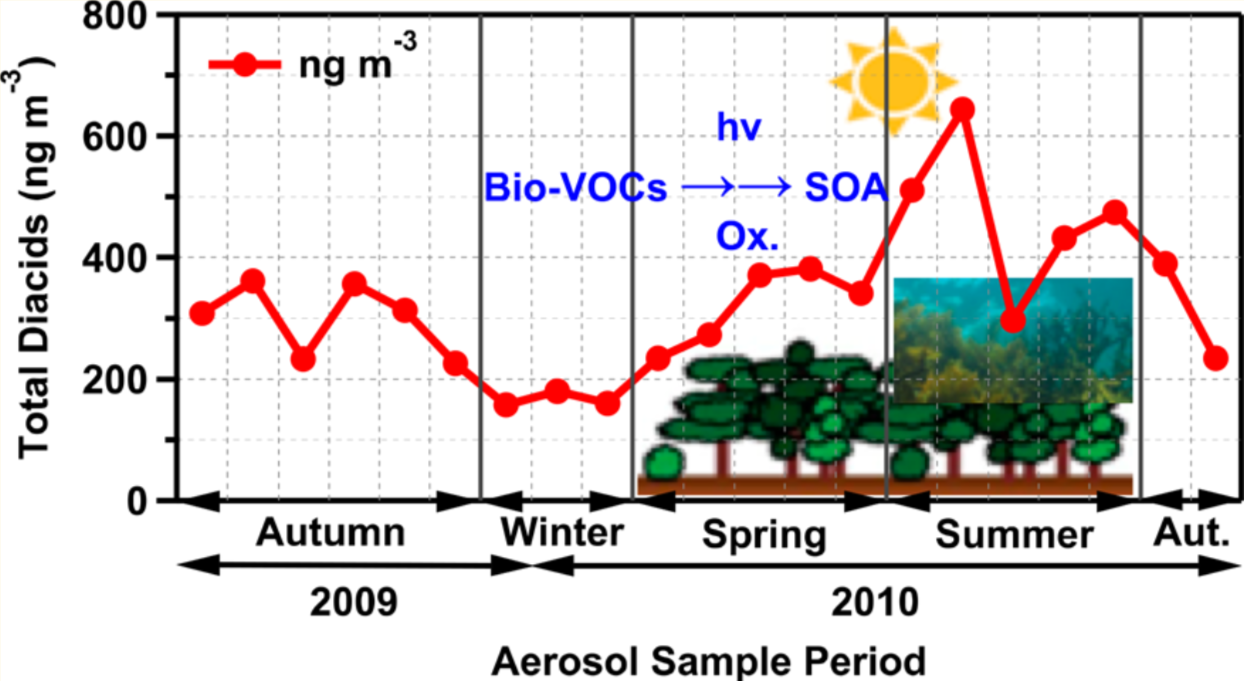Haze is closely related to biogenic volatile organic compounds and photochemical aging of organic aerosols. To better understand the origins and photochemical processing of organic aerosols over Northeast Asia, Prof. Chandra Mouli Pavuluri et al. studied that diacids, oxoacids, and α-dicarbonyls and their stable carbon isotope ratios (δ13C) in atmospheric aerosols from Sapporo, Japan. Molecular distributions of diacids and related compounds were characterized by a predominance of oxalic acid (C2) followed by malonic (C3), glyoxylic (ωC2), and succinic (C4) acids. Saturated normal diacids (C2 - C11, excluding C6) and long-chain oxoacids (ωC7 - ωC9) showed a seasonal pattern; gradually decreased from autumn to winter and then increased through spring with a peak in early summer. Short-chain oxoacids and α-dicarbonyls and δ13C of all species including diacids did not show a seasonal pattern. 13C was enriched in saturated normal diacids with a decrease in carbon numbers. Short-chain oxoacids and glyoxal were more enriched with 13C than C2 diacid. The results together with organic tracers demonstrate that seasonal distributions are driven by enhanced biogenic emissions and photochemical processing in spring/summer. In contrast, the contributions from biomass burning and fossil fuel combustion were higher in autumn and winter.

This study provides the insights to modify the atmospheric chemical transport models by the inclusion of season specific biogenic emissions. It has been published in the journal ACS Earth and Space Chemistry. Here is the link: https://pubs.acs.org/doi/10.1021/acsearthspacechem.8b00105.